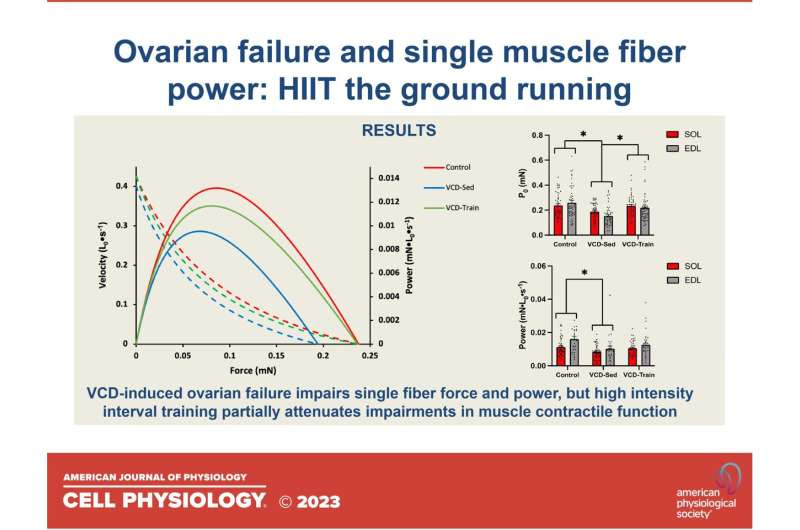by Mario Boone, American Physiological Society

Graphical abstract. Credit: American Journal of Physiology-Cell Physiology (2023). DOI: 10.1152/ajpcell.00318.2023
Menopause causes a decrease in “muscle power,” an indication of muscle function and strength. However, postmenopausal loss of muscle power can be partially prevented by using high-intensity interval training (HIIT), a form of aerobic exercise. The findings by researchers in the Department of Human Health and Nutritional Sciences at the University of Guelph in Ontario, Canada, are presented in a new study published in the American Journal of Physiology-Cell Physiology.
This study was conducted using a mouse model of menopause. The researchers noticed the ovaries of a group of mice that exercised were much smaller than those in the control group that did not. The exercise group followed a HIIT regimen consisting of four one-minute dashes, three times per week.
After eight weeks of HIIT, researchers tested the mice’s leg muscles to see how exercise improved strength. In the exercise group, muscle power loss was almost completely offset while power loss was only partially cured in the control group of mice that did not exercise.
Gaining an understanding of how muscles change with aging, as well as developing strategies to reduce the decline in muscle function, is critical to helping women remain active and independent throughout their lives.
In addition, determining how skeletal muscle function improves through exercise will allow for targeted exercise treatment programs to help slow or stop muscle loss after menopause. “Our data show that HIIT has some benefits, but a more well-rounded exercise program might be needed to have the best outcome,” said Glen Pyle, Ph.D., a co-author of the study.
More information: Emma F. Hubbard et al, The effect of gradual ovarian failure on dynamic muscle function and the role of high-intensity interval training on mitigating impairments, American Journal of Physiology-Cell Physiology (2023). DOI: 10.1152/ajpcell.00318.2023
Provided by American Physiological Society

Leave a Reply